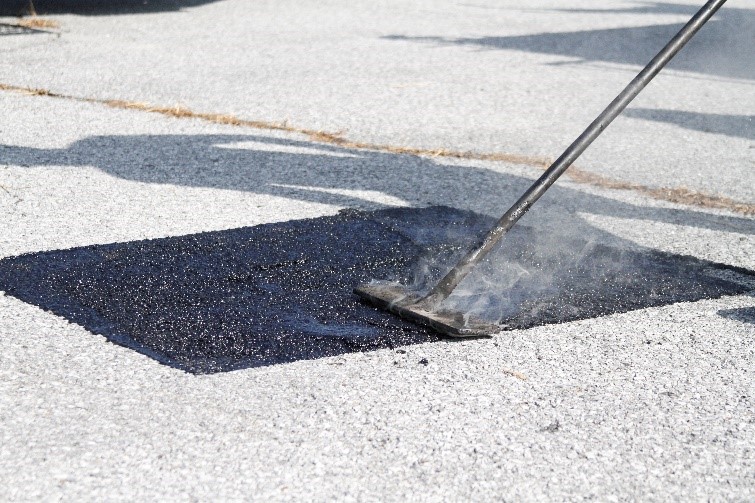Meeting the social distancing dictates of the COVID-19 pandemic, PennDOT presented a week-long array of virtual sessions on transportation innovations in November that attracted a large audience and drew rave reviews.
The first-ever Virtual Innovation Week featured 10, two-hour presentations covering new technologies and approaches in pavement and bridge preservation; technology and digital project delivery; innovative maintenance techniques, tools, and materials; innovative design approaches; multimodal planning; and traffic and safety planning and management.
"Today, we find ourselves in a virtual world where we are physically separated, but counting on technology to allow us meaningful interaction," Secretary Yassmin Gramian, P.E., said in opening remarks. "To add to these challenges, we also are experiencing additional financial challenges to our already stressed revenue concerns. We must look to innovation as we stretch the dollars we have to address our vast needs."
Nearly 1,000 individuals participated in the event. Participants included staff from across PennDOT, the Federal Highway Administration (FHWA) Pennsylvania Division Office, the Pennsylvania Turnpike Commission, local governments, transit agencies and consultants and contractors.
The virtual approach was the follow-up to last year's first-of-its-kind Regional Innovation Day held at the Farm Show Complex in Harrisburg on Nov. 14 that drew an audience of approximately 500 people.
"The irony right now is that the challenges presented to us by the ongoing COVID-19 pandemic have compelled us to embrace technology to allow us to continue to manage our business in a more isolated world," said Deputy Secretary for Highway Administration Melissa Batula, P.E., in her opening remarks on the second day of the Virtual Innovation Week.
That day's sessions included updates on smarter work zones to better manage traffic queues, advances in portable traffic camera technology, and unified control of traffic signals to improve mobility.
Batula said the sessions that day also included two of her passions: digital delivery and augmented reality.
"Digital delivery allows us to better visualize our improvements in the real world of three dimensional (3D) instead of the static two-dimensional (2D) plans," she said. "With augmented reality, we can see the improvements in real word detail right from the start of the design process."
Day 1 included sessions on pavement advances such as Hot Pour Mastics and pavement fabrics, which can add much life to spot pavement repairs, and advances in bridge joints and Geosynthetic Reinforced Soil-Integrated Bridge Systems (GRS-IBS) standards for bridges, a faster and simpler, but effective, bridge-building technique.
Moreover, the week featured a Virtual Exhibit Hall featuring more than 50 innovative tools, materials, applications and technologies submitted by PennDOT central office, and district and county maintenance offices, local government officials and the FHWA Pennsylvania Division Office. Several of the innovations showcased were State Transportation Innovation Council (STIC) and FHWA Every Day Counts (EDC) innovations that have been deployed or are currently under development in Pennsylvania.
Executive Deputy Secretary George McAuley, P.E., noted that PennDOT is working hard to encourage innovation.
He mentioned that PennDOT's Materials Testing Lab is streamlining the process for new product approvals, and PennDOT districts in northeastern, western and southwestern Pennsylvania created innovations councils to discuss and implement efficiency, safety and performance improvements.
"Across PennDOT, the key attributes have been strong leadership, constant and effective communication, and dedication and buy-in from every level of our hard-working and loyal staff," McAuley said.
Deputy Secretary for Planning Larry Shifflet referred to presentations on the third day sharing details of winter fleet preparation, anti-icing best practices, dump truck specifications and innovations adopted by PennDOT's maintenance forces and local governments to cope with the COVID-19 pandemic.
"People on the PennDOT team across the state rose to meet and exceed expectations during this difficult time and we are grateful for their dedication," he said.
On the last day of the event, Deputy Secretary for Multimodal Transportation Jennie Granger introduced sessions on Unmanned Aerial Systems (UAS), PennDOT's ongoing efforts to develop a Pennsylvania Active Transportation Plan to promote options that include bicycling and walking and public transit's steps to use improved data technology to enhance efficiencies at both fixed route and shared ride transit providers. The day also featured points for developing local traffic safety plans, innovations in crash data collection and PennDOT's use of sequential lighting chevrons to reduce crashes at a curving ramp connecting Interstates 86 and 90 in Erie County.
"Ensuring safety and a better quality of life for the people of the Commonwealth is embedded in what we are trying to accomplish," Granger said.
Audience reaction was very positive. In a post-event survey, 91 percent of respondents said they were very satisfied or satisfied with the sessions and many said they liked the ability to select just the sessions they were interested in. Some noted that the virtual format opened the sessions to far more than could have come to an in-person event. Eighty-three percent of respondents said they learned an innovation that they could use in their organizations.
For more information about the PennDOT Virtual Innovation Week and to access session recordings and the exhibit hall, visit the event website.
 Yassmin Gramian, P.E., PennDOT Secretary
Yassmin Gramian, P.E., PennDOT Secretary
 Alicia Nolan, FHWA Division Administrator
Alicia Nolan, FHWA Division Administrator






































